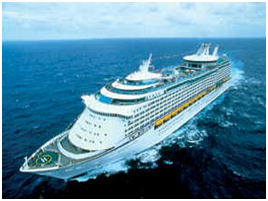CODES AND CONVENTIONS QUESTIONS & ANSWERS PART-1
Q. Illustrate the provisions which relates to the establishing of procedures for identifying and testing of “critical” equipment under ISM code. On what basis are the list of critical equipment and systems made and...
CLASS, SURVEY, INSPECTIONS QUESTIONS & ANSWERS PART-8
Q. Define ‘Unseaworthy ship’ within the meaning of MS Act 1958 as amended. Explain the detainable deficiency with reference to the PSC inspection & describe the procedure to be followed for timely release of...
CLASS, SURVEY, INSPECTIONS QUESTIONS & ANSWERS PART-7
Q. Explain the term “port state control” (PSC) Inspection. Underline its authority and the basis of such inspections. Enumerate the relevant regulations and annexes of SOLAS 74, LOADLINE 66, MARPOL 73/78, STCW 78 and...
CLASS, SURVEY, INSPECTIONS QUESTIONS & ANSWERS PART-6
Q. With reference to the PSC inspections, explain various codes used to represent Actions to be taken by the vessel against the deficiencies reported. Your IOPP equipment is not functional for the want of...
SAFETY REGULATIONS FOR DIFFERENT TYPES OF SHIPS
Basically there are no universally relevant definitions
of ship types, particular descriptions & names are used within IMO treaties
& the conventions. The following is the list ship types defined in several
IMO instruments:
A passenger ship is...
GUIDELINES FOR PROCEDURES OF BLACKOUT TESTING
Guideline for procedures of blackout testing during Class Survey
The scope of this guideline for testing blackout, is to offer a general guidance and to minimize the risks associated with a complicate test and to...
LAW OF THE SEA
Demonstrates
knowledge and understanding of:
Convention on Law of the SeaTerritorial Sea and the Contiguous
ZoneInternational StraitsExclusive Economic Zone and
Continental ShelfHigh SeasProtection and Preservation of
the Marine Environment
International
Convention on the Load Lines, 1966, as modified states that no...
EVALUATION OF DAMAGED STABILITY EQUILIBRIUM CONDITIONS
The most
important step in analysis of a damaged condition, is to calculate the
equilibrium conditions, which include the final trim, heel and drafts after the
location and extent of damage is known. There are two methods...
TANKER SAFETY – PREVENTING ACCIDENTAL POLLUTION
IMO's main responsibility is to make shipping of all
types safer, including tankers. The
actions included in the numerous safety conventions & suggestions utilize
to these as well as other ships - & the safer a ship...
1972 CONVENTION FOR SAFE CONTAINERS (CSC 1972)
The rapid increase since the 1950s in the use of freight
containers for the consignment of goods by sea and the development of
specialized container ships, leading the International Maritime Organization
(IMO), in 1967, to study the...










